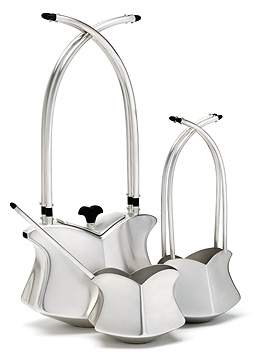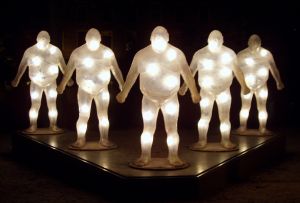Have any of you ever encountered Constantin Brâncuşi’s Romanian pieces of modern art? Two days ago while going about my daily rounds about the worldwide artweb, I saw this picture of a remarkably stunning minimalistic sculpture. Clad in a golden hue and oriented like a vertical spire, it was an attention-grabbing artwork I just had to blog about. In the early 1920’s, I believe the original first work, “Pasărea în văzduh” was created. That very same sculpture came up at auction last 2005 and demanded the high selling price of over twenty million dollars. Today his series of sculptures under the known name “Bird in Space” is well spread out across the globe. Australia’s National Gallery, the Peggy Guggenheim Collection (Italy) and the Philadelphia Museum of Art are just some of the places that house his works of bronze and marble.
What’s amazing about this series of works is how movement is visually captured in a static field of presence. Brâncuşi ‘s unique depiction of his subjects allowed for their artistic beauty to be derived from an alternate source rather than mere physical beauty or symmetry. He posed the notion of dynamic life in his body of works. To showcase this, he made people see a different side of the subjects, encompassing their existence as a visual purpose. Flight, movement, speed and distance can all be felt from one look at his majestic creations. Aside from being a colleague of the famous Marcel Duchamp (The Fountain), Brâncuşi was able to even change the outlook on fine art in the United states customs department when an late 1920’s issue regarding customs inhibited the dignity of his art pieces momentarily. A lot of people supported Brâncuşi and he eventually won out the favor of society after an appeal. This was the very first non-representational abstract sculpture to be considered as a type of art by the government bodies involved.
Photography credited to Dennis Irrgang
Sculpture by Constantin Brâncuşi







